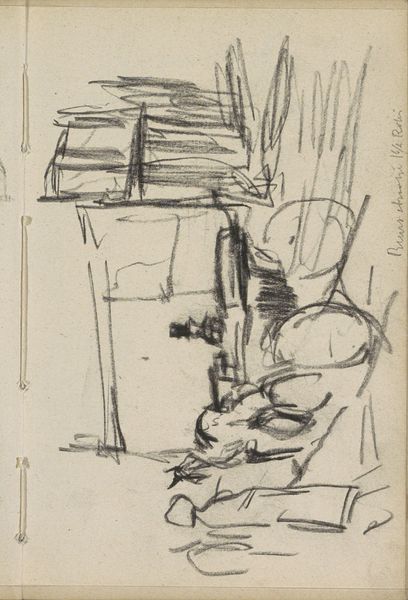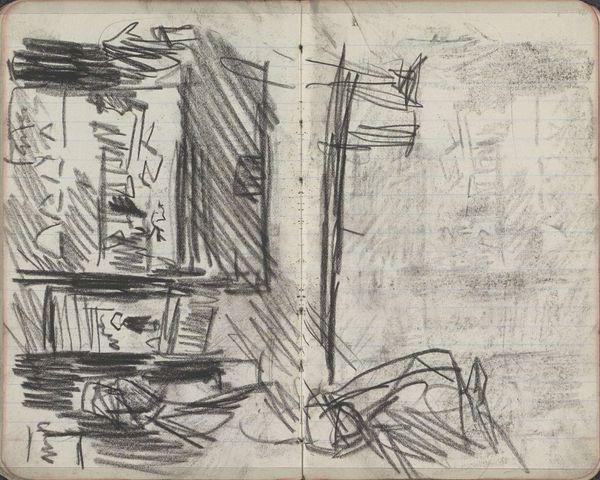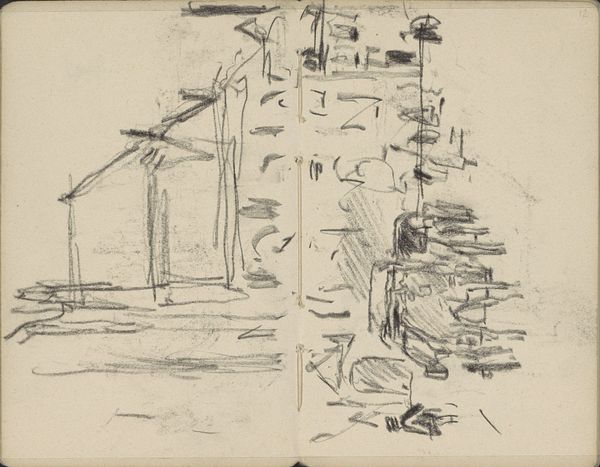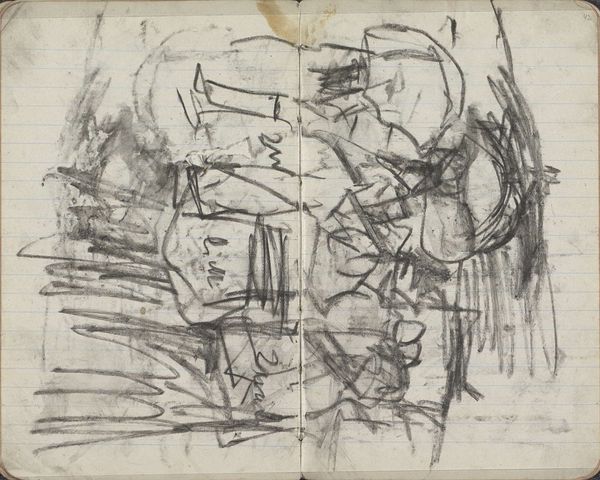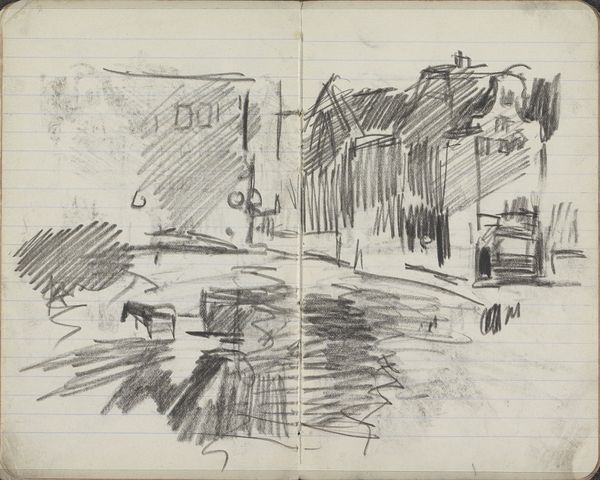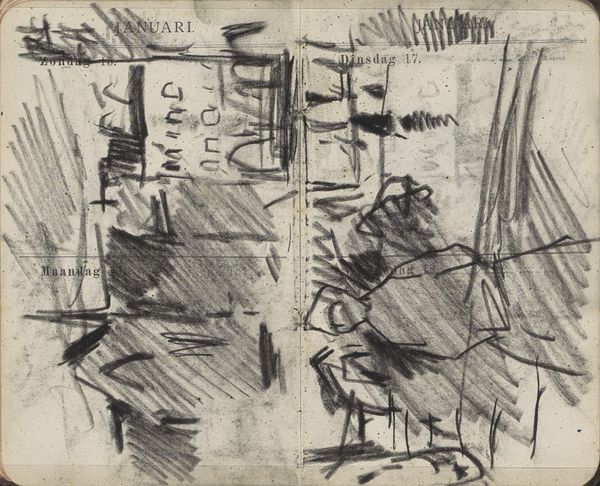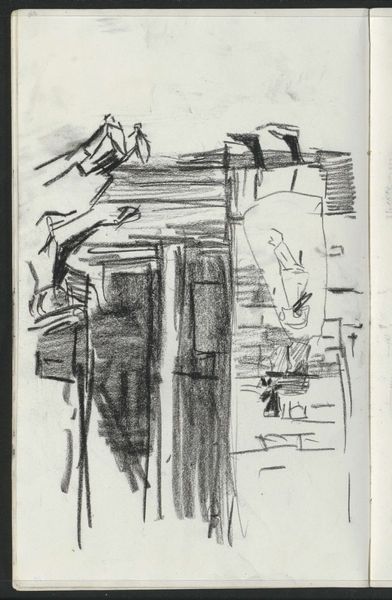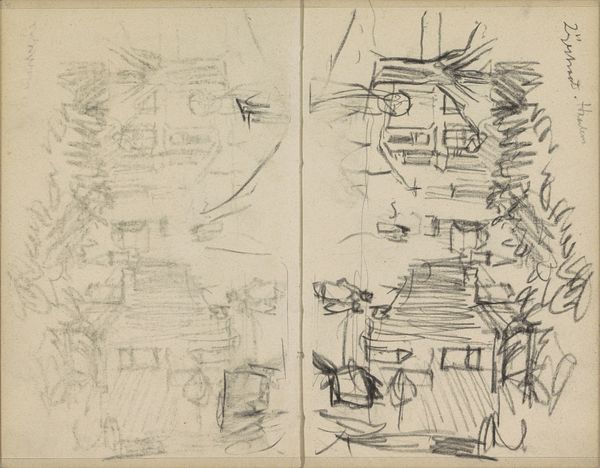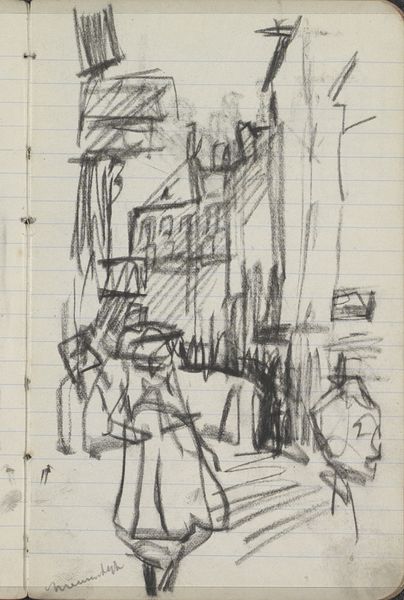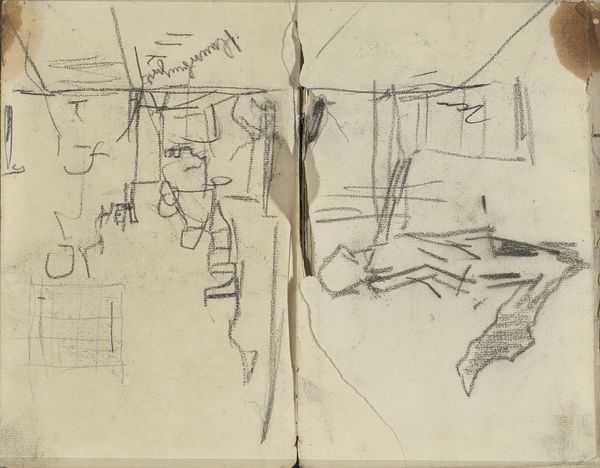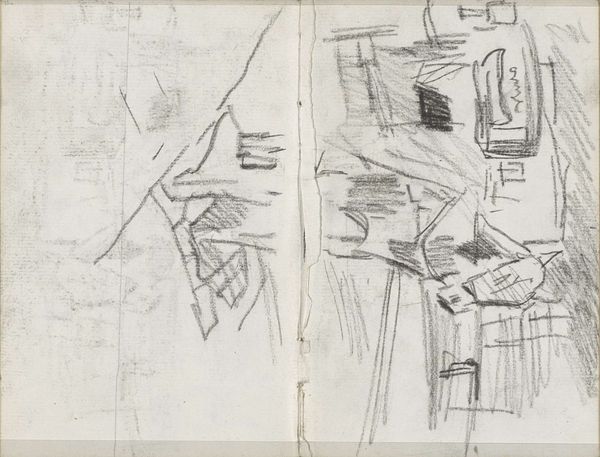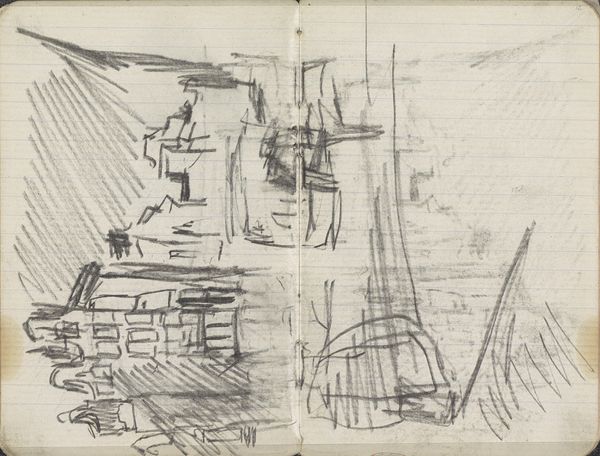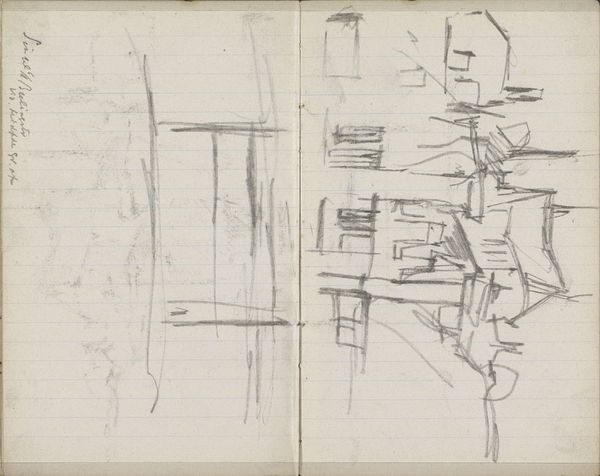
Copyright: Rijks Museum: Open Domain
Curator: This drawing by George Hendrik Breitner, titled "Gezicht op de Oude Hoogstraat te Amsterdam," was created sometime between 1893 and 1898. It’s currently held here at the Rijksmuseum. What are your first impressions? Editor: Well, I'm immediately struck by the energy and the raw, unfinished feel. It reminds me of catching a glimpse of a thought in progress. The chaotic composition hints at the everyday hustle of city life. Curator: It’s part of a larger cultural fascination with urban spaces during this period. Artists were increasingly drawn to representing modern life and the dynamism of the city, documenting the lives of everyday citizens. Breitner, in particular, was very interested in depicting working-class life. Editor: Yes, and looking at it through that lens, you can feel the class dynamics present. Breitner isn’t just showing us a street; he’s offering a peek into a specific social environment, one filled with labor, commerce, and possibly, a struggle for survival. I like how loose and unpretentious it is, compared to the formal academic art of the time. Curator: He favored capturing fleeting moments. It’s essentially an open sketchbook page—note the lined paper and hasty marks of graphite and pencil. The use of such directness reflects the rising influence of photography on art. Editor: It's interesting to consider that this "sketch" may have been his way of resisting idealized depictions. He isn't romanticizing urban poverty or glorifying industrial progress; rather, he seems committed to capturing reality as he saw it, unvarnished and immediate. It also reminds us that there are very few female figures in this art piece; an artistic statement of its own, perhaps? Curator: It's an astute point. Although direct evidence might be thin, we know that art reflects the social attitudes of the time and reveals details about marginalized people. And yes, this viewpoint certainly aligns with the burgeoning Realist and Impressionist movements—pushing back against historical painting and academic tradition, toward observable reality. Editor: It leaves you thinking about who is missing from this frame, what isn’t being seen. Thanks to artists like Breitner, we can have more meaningful dialogues about representation and perspective within our artistic and historical frameworks. Curator: Indeed. Breitner’s rapid impressions open discussions about society. It helps reveal the values of late 19th century Amsterdam and opens avenues of discussion around what has persisted into contemporary artistic and social discourse.
Comments
No comments
Be the first to comment and join the conversation on the ultimate creative platform.
